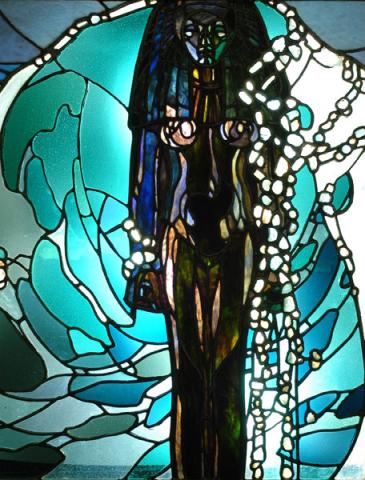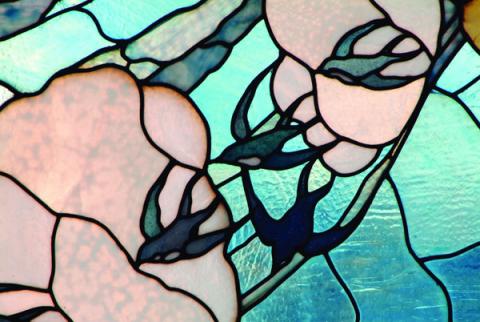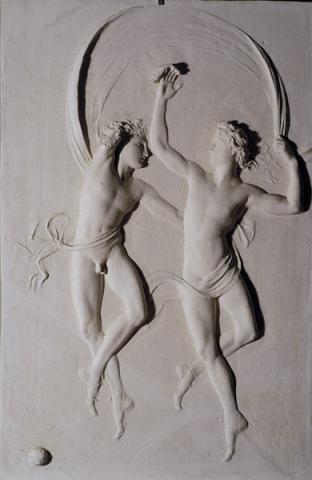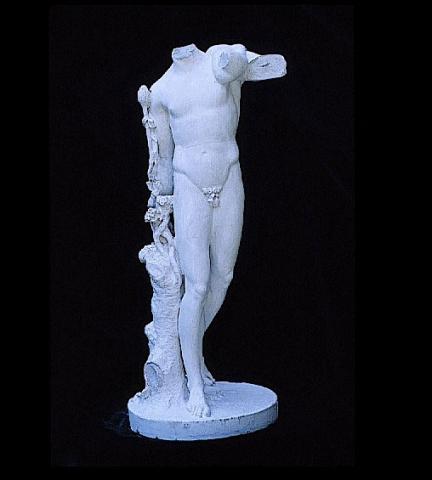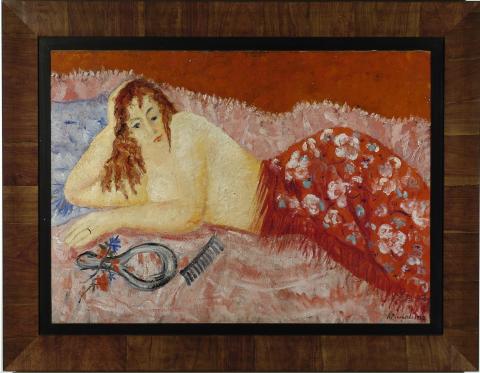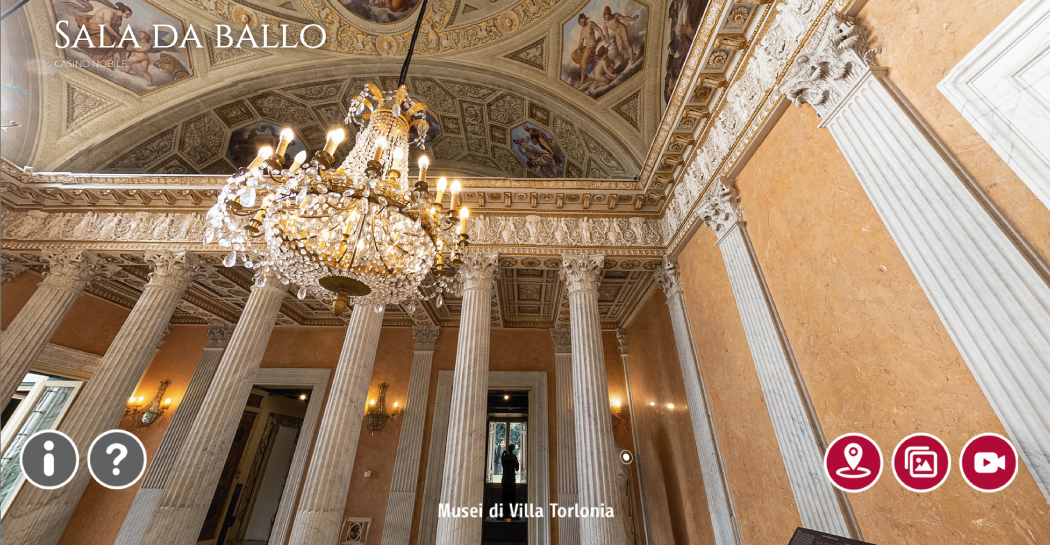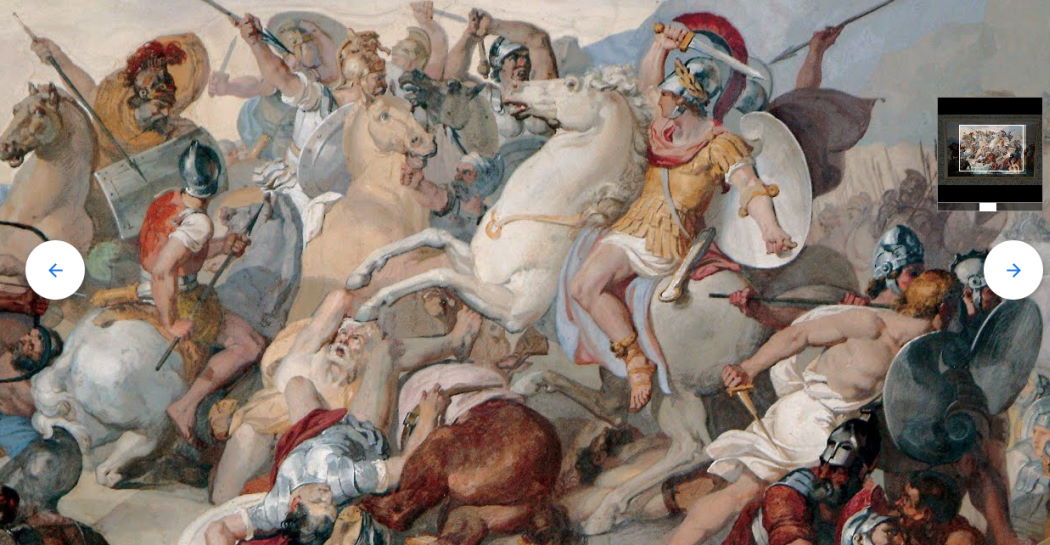The Artwork of the Month of the Roman School Museum - February 2023
Adriana Pincherle
Nudo con scialle, 1932
Painting oil on canvas, 113x80 cm
on loan from Giuseppe Bertolami, at the Museo della Scuola Romana
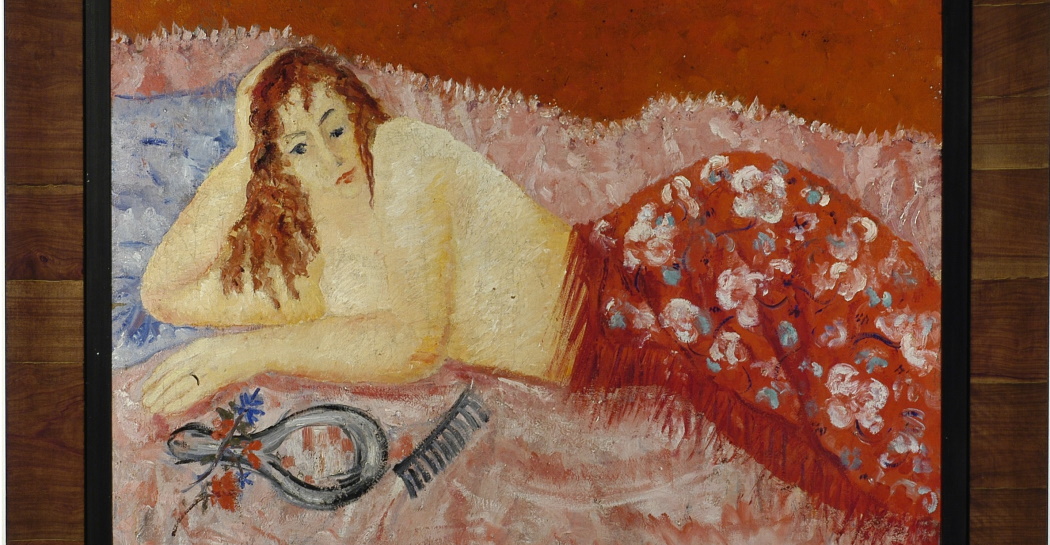
This painting in which a half-naked young woman lies on her side facing the viewer is one of the oldest surviving works by the painter Adriana Pincherle. Here, the artist demonstrates the closeness of language with the group of artists of the Scuola di via Cavour, Antonietta Raphael, Mario Mafai, Scipione (born Gino Bonichi), active in the inter-war period, and their anti-academic and expressionist style. In particular, there is a very close relationship with Scipione's famous painting Awakening of the Blonde Mermaid, 1930, to which it is similar in terms of the posture of the female subject and the detail of the comb. Pincherle's painting, however, differs markedly from it in its tonal choice and pictorial subject matter: reddish and sombre in Scipione's painting, sunny with touches of pink, yellow and sky-blue in Pincherle's. Little interested in the rendering of reality, here, as in other works, the painter's artistic research is oriented in favour of freedom of form and colour. The decorative motifs on the red shawl covering the woman's legs, the lack of depth of the scene, in which the body is superimposed on the fabrics and the backdrop without chiaroscuro and distinction of planes, also lead Pincherle and this painting back to the international artistic experience of the time, which she had already known before going to Paris, probably thanks to her attendance at the Venice Biennale where, for example, accompanied by her father, she was able to see Matisse's odalisques, as is evident from a testimony she gave in her later years.
Adriana Pincherle (Rome 1906 - Florence 1996) was a leading figure in 20th century Italian art, who left a significant contribution to the Roman School and more generally to the pictorial currents of 1930s neo-expressionism and post-war neo-Cubism in Italy. As the art critic Cesare Vivaldi pointed out in 1981, in a monograph dedicated to her, her case remains exemplary of the avoidance of the work of women artists by historiography and critics, who for a long time did not duly value them. Elder sister of the writer Alberto Moravia, Pincherle came from an upper middle-class Roman family, of Jewish origins on the part of her father, the civil engineer Carlo Pincherle, and Catholic origins on the part of her mother Isa De Marsanich. Fascinated by watercolour painting practised at an amateur level by her father, the young Adriana, having completed her classical studies, attended Alfredo Petrucci's atelier 'for young ladies' and the Free School of Nude at the Academy of Fine Arts in Rome. She immediately managed to enter the Roman artistic environment thanks to her encounters with the sculptor Mimmo Spadini and the painter Scipione. He therefore made his debut in 1931 by exhibiting in the group exhibition 'First Roman exhibition of female art' at the Galleria di Roma. In 1932, at the same gallery, she held her first solo exhibition together with the artist Corrado Cagli, where she was appreciated by the critic Roberto Longhi. If the encounter with the artists of the Roman School determined her pictorial growth, her maturation, however, came about after her trip to Paris in 1933, where she had the opportunity to see the works of the greatest representatives of European art from life. Their influence can be seen in the elongation of the bodies or the Modigliani-like cut-outs of the eyes of some of the painter's figures, in the drafting of colour often close to Derain, Chagall, Soutine and Pascin, and finally in the arabesque marks and joyfulness of colour in the manner of Matisse. In the three years between 1934 and 1937 he participated in numerous exhibitions, including, in 1934, the 'Exhibition of Contemporary Italian Art' in the USA, in 1935 at the 'II Quadriennale' in Rome and in 1936 at La Cometa, the gallery financed by Countess Pecci Blunt and directed by the writer Libero de Libero. During these years, on the occasion of one of her solo exhibitions in Genoa, she met the painter Onofrio Martinelli, whom she married in 1943, moving with him to Florence and creating a human and artistic partnership. During the years of the Second World War, Pincherle, due to racial laws and given her Jewish origins, was forced to go into hiding in several Italian towns including Bibbiena, Vallombrosa and Taranto. In the years following the war, she exhibited in several exhibitions in Italy, including at the Galleria del Vantaggio in Rome in 1955, presented by Roberto Longhi.
Back to the section > The Artwork of the Month of The Museo della Scuola Romana


























